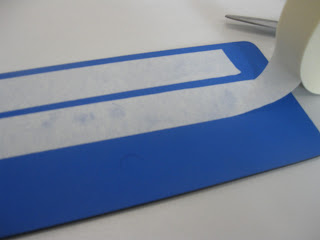The Object Pattern making Workshop.
The group ready to start the object pattern making workshop. We needed cartridge paper, masking tape, scissors, craft knife, ruler/square/pattern master, pencil, black felt tip pen and a camera. As you can see I have bought a glass bottle to cover.
| Cut the masking tape into strips and place onto a cutting board. |
 |
| Cut the strips in half using the ruler. |
 |
| Mark one of the narrow strips the black line along the centre and place onto the object to be covered. |
 |
| Take the next strip and place it alongside the marked strip as in the picture above. |
 |
| Keep wrapping object from top to bottom until fully wrapped. Then start wrapping the masking tape around the object as in the photograph above. |
 |
| When the object is fully wrapped ( two layers) as above. Then mark where you're going to cut the tape off. See picture above. |
 |
| Mark from the bottom of the object first with pencil and then with the fine black felt pen. |
 |
| Mark the object with lines as shown in the photograph above. |
 |
| Mark lines with numbers so you can rejoin the pieces together after they have been cut. |
 |
| Now with a craft knife you start cutting along the lines through the masking tape which can be quite difficult because it's quite thick in places so you need a sharp craft knife. |




